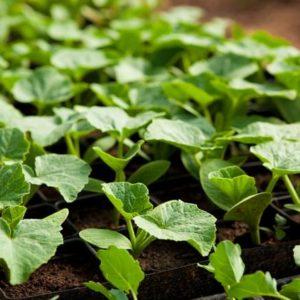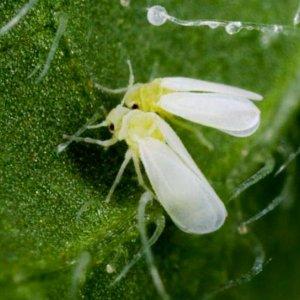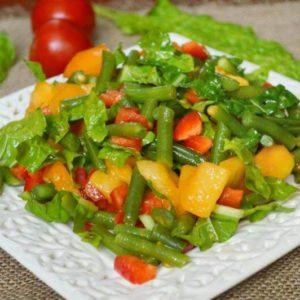Unusual-looking and amazingly tasty tomato “Honey Drop”
In Italy, the tomato has long been called the golden apple. This is not without reason, because the shape of the vegetable really looks like an apple, and juices and jam are made from the sweet and sour pulp. Next we will talk about a bright representative of the “golden apples”, namely the Honey Drop tomato. Why the vegetable deserves such a “delicious” name and how to get a rich harvest, we will consider below.
Description of the variety
A drop of honey will not only give you delicious tomatoes, but will also decorate any area. The vine-shaped bushes are decorated with small oval yellow-orange tomatoes.
The variety is resistant to pests, tolerates weather changes well, and is not afraid of high humidity. In addition, Honey Drop has an excellent taste and moderate juiciness.
Distinctive features
 The fruits ripen in approximately 110 days. It is best to grow tomatoes in a greenhouse. Characterized as mid-season. The bushes are indeterminate and are not limited in growth.
The fruits ripen in approximately 110 days. It is best to grow tomatoes in a greenhouse. Characterized as mid-season. The bushes are indeterminate and are not limited in growth.
The height of the plant reaches 2 m. The leaves are large, dark green. Tomatoes ripen in bunches, 10-15 pieces each. Due to their high growth, the bushes need support and garter.
Characteristics of tomatoes, yield
The tomatoes are small, the average weight of one is about 15 g. Some specimens reach 30-35 g. Outwardly, due to their oval shape, tomatoes resemble small pears and look impressive whole on the holiday table.
The internal chambers are small and there are few seeds. The taste is pleasant, soft, with a honey accent. Sometimes the Honey Drop is called the “amber drop”.
Important! If all agrotechnical standards are observed, one tomato bush produces about 2 kg of vegetables.
How to grow seedlings
To get a good harvest, you need to carefully consider the choice of seed and soil preparation.
Seed preparation
Before you go to the store to buy seeds, carefully study the information from the manufacturers. It’s a good idea to ask your gardener friends which suppliers they prefer.. Seeds must be disinfected before planting. Solutions of “Bud”, “Zircon” or any other growth stimulant will come to the rescue. You can also use proven folk remedies, for example, aloe juice.
Next, the material must be germinated. To do this you will need a cotton pad and a small plate. Unfold the disk and place the seeds on it. Cover the top with damp gauze and place it on a plate. Make sure that the seeds do not dry out. Experienced gardeners also advise adding aloe juice to the water.
Container and soil
It’s easy to prepare the soil yourself. To do this you will need garden soil, humus, peat and ash. When the mixture is ready, it should be disinfected. A solution of potassium permanganate is suitable for this.
If you buy ready-made soil, you should also make some efforts to enrich the soil with useful elements. The fact is that the main substance in purchased land is peat. It does not allow water to pass through well and is highly acidic, so such soil is sometimes not suitable for growing seedlings. To eliminate the problem, it is recommended to add dolomite flour or chalk to the soil. This will reduce the acidity level and make the soil more suitable for growing seedlings.
Important! Any container is suitable for sowing seeds.For example, wooden boxes, flower pots, buckets. The main thing before planting is to wash the container well and dry it.
Sowing
When the container, soil and seeds are ready, start sowing. Make holes at a distance of 3 cm from each other, place seeds in them and sprinkle soil on top. Water the seedlings generously with warm water, place in a warm, bright place and cover with thin glass or film. This will create a favorable microclimate for germination.
Growing and care
 First of all, pay attention to the air temperature. The optimal temperature is about 23 degrees.
First of all, pay attention to the air temperature. The optimal temperature is about 23 degrees.
As soon as the first shoots appear, place the container in a cooler place. Gradually open the film slightly. It is recommended to completely remove it after 2 weeks from the moment of planting.
Pay special attention to watering. For the most correct watering, it is recommended to use a pipette or syringe. Make sure that the water gets to the base of the sprout and not to the leaves. Under no circumstances should you water the seedlings with cold tap water. Otherwise, the bushes will become infected with root rot.
Remember that Honeydrop loves a lot of light. If there is a lack of sun, it is recommended to create additional lighting for the bushes using phytolamps.
After 10-15 days from the moment of planting, the first feeding. An excellent option for this is potassium superphosphate or ammonium nitrate. Apply the last fertilizing 10 days before planting the seedlings in the ground.
How to grow tomatoes
After 50-60 days, move the seedlings to open ground. Let's take a closer look at how to properly grow Honey Drop tomatoes.
Landing
Prepare the soil in the fall. Good predecessors for tomatoes are beds of cabbage, cucumbers, and potatoes.Remove debris, plant debris, weeds and dig up the soil. Also, do not forget to disinfect the area. An excellent remedy for this is the above-mentioned potassium permanganate.
Plant seedlings in early July. Place the plant in rows, leaving a distance of about 40 cm between the bushes. After planting, water the beds generously with warm water.
Care
It is best to water the Honey Drop in the afternoon. Make sure that water does not get on the leaves and stem, otherwise there is a high probability of developing diseases. Water at room temperature is suitable for irrigation. Throughout the entire period, the bushes need to be fertilized with organic and mineral fertilizers. Pay special attention to nitrogen-containing substances. However, be careful: an excess of nitrogen will also lead to the appearance of certain types of diseases.
During the maintenance process, periodically loosen the soil. This saturates it with oxygen and gives the plant additional strength. Also, the Honey Drop needs support, otherwise the brushes will not withstand the weight of the tomatoes and will break. Sometimes bushes form additional shoots that need to be removed. Do this carefully so as not to damage the stem.
Features of cultivation and possible difficulties
 The honey drop must be tied up regardless of the growing environment. Also, the bush definitely needs shaping.
The honey drop must be tied up regardless of the growing environment. Also, the bush definitely needs shaping.
Most often, a tomato is formed into 2 stems. In addition, despite the plant’s good resistance to diseases, preventive measures must be taken. For example, treat the soil with ammonium nitrate or spray the bushes with whey.
Do not forget about removing weeds, as foreign plants will take away some of the necessary nutrients from the vegetable. Remove excess grass every 5-7 days.Weeds grow especially quickly after heavy rains.
Diseases and pests
Due to high humidity, tomatoes suffer from late blight or powdery mildew. Late blight appears as brown spots, and powdery mildew appears as a white coating.
Both special medications (Ridomil Gold, Acrobat MC, Profit Gold, Metalaxil) and folk recipes, for example, a solution based on tobacco leaves, help to get rid of them.

Common pests include mole crickets, wireworms, whiteflies and spider mites. The principle of action of all insects is similar.
Some eat the root system, others destroy leaves and stems.
Because of this, the metabolism of tomatoes is disrupted and the bushes die.
In pest control The drugs “Aktara”, “Medvetox”, “Provotox”, etc. are effective.
The nuances of growing in open ground and in a greenhouse
Before planting tomatoes in open ground, loosen the beds with a rake. It is recommended to grow the variety outdoors only in the south of the country. The first fertilizing in open ground is carried out 3 weeks after planting.
Use “Nitrophoska” or potassium chloride. Often the composition of fertilizers depends on weather conditions. For example, in cloudy weather, increased doses of potassium sulfate are used, and on sunny days, preference should be given to urea.
If the Honey Drop is planted in a greenhouse, then do not forget to regularly ventilate the structure. Closed doors increase the likelihood of mold and infection. The best way to ventilate is through small windows in the greenhouse.
Harvesting and application
The harvest begins already at the stage of milk maturity. The fruits can ripen at room temperature. It is better to store them in a cool, dark place.
The variety is widely used.Because of its bright sweetish taste, many people like to eat the vegetable fresh. In addition, Honey Drop is perfect for whole pickling and canning. Yellow tomatoes look appetizing in winter preparations.

Tomatoes are often stuffed with cheese or vegetables, and all sorts of snack options are made. Also used for making sandwiches, salads, and side dishes.
The taste of Honey Drop complements meat and poultry well.
Tomatoes are also used in folk medicine. For example, many people know a recipe with tomato and garlic, which helps cope with colds and boost immunity during the cold season.
Tomato-based tincture serves as a powerful natural antioxidant.
Advantages and disadvantages of the variety
The positive characteristics of the variety include:
- unique sweetish taste;
- presentable appearance;
- the ability to use tomatoes fresh and in cooking;
- a large amount of vitamins in the vegetable;
- the ability to grow both in open ground and in a greenhouse;
- good shelf life;
- strong immunity to diseases and pests.
Disadvantages of the variety:
- due to their high growth, the bushes need staking;
- removal of stepchildren is mandatory;
- increased need of the variety for mineral and organic fertilizers.
Farmer reviews
Honey drop is loved by both beginning gardeners and experienced farmers. However, sometimes there is a negative opinion about the variety.

Maria, Volgograd: “A colleague from work recommended me a drop of honey. Problems began at the seedling stage. The seeds did not germinate well. When the time came to plant them in the garden, half of the seedlings died altogether. I think it's a bad manufacturer. I planted the remaining seeds and harvested them.The tomatoes turned out to be very small. Tastes ordinary."
Galina, Samara region: “Droplet is my favorite tomato. No matter how many varieties I’ve tried, I can’t find anything better than Honey Drop. I love the sweet taste and beautiful appearance of these tomatoes. The yield is high, so it’s possible to eat fresh vegetables and prepare dishes for the winter.”
Maxim, Republic of Bashkortostan: “I planted Honey Drop for the first time. I was pleased with the harvest. The tomatoes set quickly, there were almost no shoots. Watered as usual and removed weeds. I will plant more vegetables.”
Read also:
Top 15 most delicious recipes: how to pickle tomatoes in jars for the winter.
Cooking tomatoes in jelly for the winter “Awesome”: all guests will ask for the recipe.
Conclusion
The name of the Honey Drop tomatoes speaks for itself. The vegetable perfectly combines high taste and presentable appearance. Thanks to its small size, it is suitable for preparing various dishes, as well as tomato juice and ketchup.
The tomato is unpretentious in care, although it requires some special skills. The most important thing is to tie up the bushes, remove weeds and water the beds. Don't forget about fertilizers and fertilizing. To prevent diseases, it is better to carry out preventive measures even at the seedling stage.